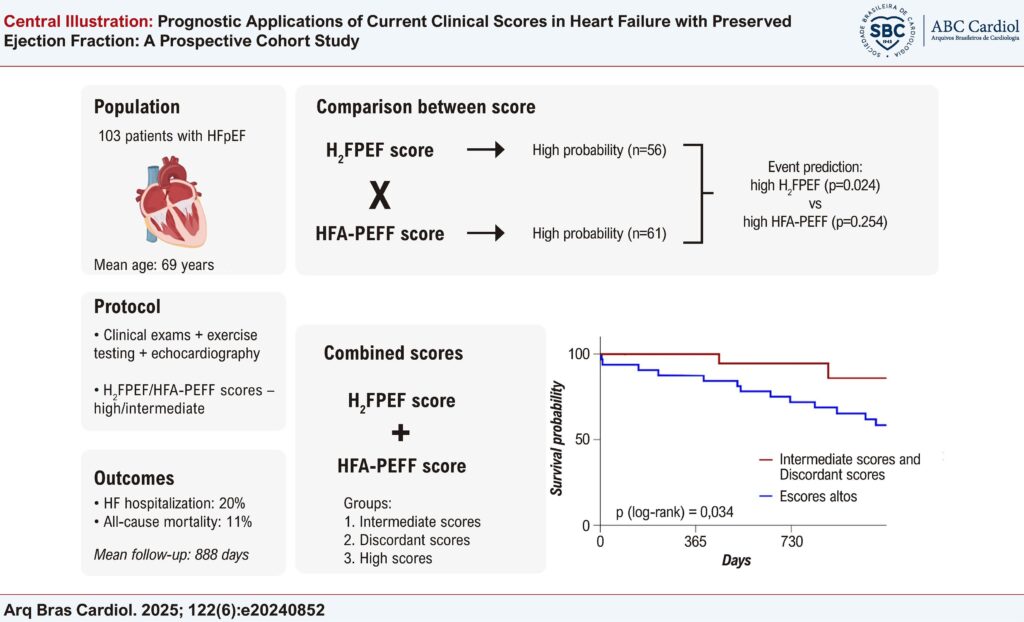Arq. Bras. Cardiol. 2025; 122(6): e20240852
Prognostic Applications of Current Clinical Scores in Heart Failure with Preserved Ejection Fraction: A Prospective Cohort Study
This Original Article is referred by the Short Editorial "Brazilian Evidence Reinforces the Applicability of the H2FPEF and HFA-PEFF Scores in HFpEF".
Abstract
Background
The H2FPEF and HFA-PEFF scores were developed to support the diagnosis of heart failure with preserved ejection fraction (HFpEF) and may also help predict cardiovascular outcomes.
Objective
To assess the prognostic value of these scores in a cohort of individuals with HFpEF.
Methods
This prospective study was conducted at a tertiary hospital in Brazil between March 2019 and December 2021. After clinical evaluation, echocardiography, and exercise testing, the H2FPEF and HFA-PEFF scores were calculated. Patients were classified into intermediate probability groups (H2FPEF: 2-5 points; HFA-PEFF: 2-4 points) and high probability groups (H2FPEF >5 points; HFA-PEFF >4 points). The primary outcome was a composite of all-cause mortality and hospitalizations due to HFpEF. Statistical significance was set at p<0.05.
Results
A total of 103 patients were followed for an average of 888 days (±291). The mean age was 69 years (±8.3), and 61% were women. Twenty-seven patients (26.2%) experienced primary outcomes, totaling 32 events—11 deaths and 21 hospitalizations due to HFpEF. In the receiver operating characteristic (ROC) curve analysis, the H2FPEF score showed better predictive ability for the outcomes (area under the curve [AUC]: 0.637, 95% CI: 0.518–0.756, p=0.035) compared to the HFA-PEFF score (AUC: 0.572, 95% CI: 0.448–0.696, p=0.270). In the Kaplan-Meier analysis, high-probability classification by both scores was significantly associated with the occurrence of outcomes (log-rank p=0.034), compared to the intermediate score group or patients with differing classifications between the two scores.
Conclusions
The H2FPEF score showed better performance than the HFA-PEFF score in predicting outcomes in patients with HFpEF. Findings from this contemporary study conducted in Brazil contribute to risk stratification in clinical practice.
Keywords: Diagnosis; Heart failure; Prognosis
532

